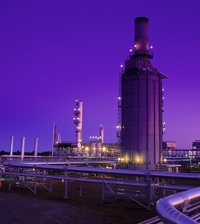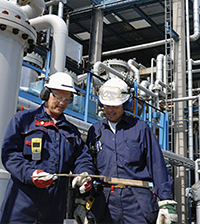
Blog
Blog Articles


Benefits of Standby Time in Adsorption Dehydration Process
Molecular sieves are used upstream of turboexpander units and LNG facilities to dehydrate natural gas to <0.1 ppmv. In the natural gas industry, the molecular sieves employ heat to drive off the adsorbed water.
The cyclical heating/cooling of the adsorbent results in a capacity decline due to a gradual loss of crystalline structure and/or pore clo...
View Article

PetroSkills keeps the Midstream Momentum moving at the Annual Gas Processors Association (GPA) Convention in San Antonio, TX
PetroSkills is proud to have recently participated in the Gas Processors Association’s Annual Convention, April 12-15 in San Antonio, Texas. The Convention had more than 2500 Midstream in attendance, collaborating on such topics as facilities design, product specifications, pipeline safety and operations and maintenance.
View Article

Estimating Sour Gas Water Content by New Correlations and Simplified Charts
In April's "Tip of the Month," we will present a set of correlations and simplified charts for estimating sour gas water content directly without having to look up the water content of sweet gas. These correlations are based on the Wichert and Wichert chart (Figure 20-9 of the GPSA data book) and Wagner and Pruss water vapor equation and Bukacek co...
View Article

PetroSkills Participates in Society of Petroleum Engineers 2015 Middle East Oil & Gas Show (MEOS)
Team members from PetroSkills Middle East recently participated in the hugely successful 2015 MEOS conference at the Bahrain International Exhibition & Convention Centre. Attendees to the conference, which is organized by the Society of Petroleum Engineers, represented many regions throughout the world.
View Article

Process Safety and Low Oil Prices
In this edition of our Tip of the Month series, we reflect back to December 2008, and get a reminder from the United States Chemical Safety Board (CSB) to remain focused on process safety and accident prevention during this time of lower oil prices.
During the economic downturn of 2008, oil prices dropped significantly. The latest drop in crude oi...
View Article
Blog Categories

